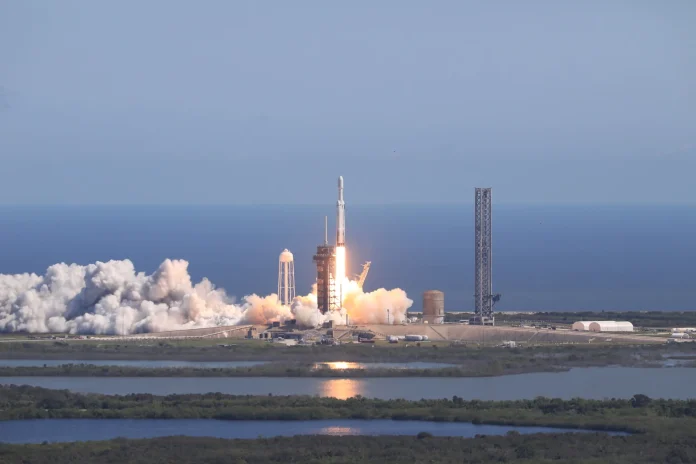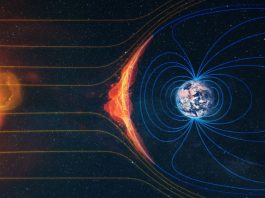NASA’s Europa Clipper mission has officially begun its journey to explore Jupiter’s moon Europa, a celestial body that may harbour conditions conducive to life.
Launched at 12:06 pm EDT on Monday aboard a SpaceX Falcon Heavy rocket from Kennedy Space Center, the Europa Clipper spacecraft is now on its way to conduct an in-depth study of the icy moon and its subsurface ocean.
About five minutes after lift-off, the rocket’s second stage ignited, and the payload fairing opened to reveal Europa Clipper.
By 1:13 pm, communication was established with NASA’s Deep Space Network, confirming that the spacecraft was in good health.
“Congratulations to our Europa Clipper team for beginning the first journey to an ocean world beyond Earth,” said NASA Administrator Bill Nelson.
“NASA leads the world in exploration and discovery, and the Europa Clipper mission is no different. By exploring the unknown, Europa Clipper will help us better understand whether there is the potential for life not just within our solar system but among the billions of moons and planets beyond our Sun.”
A milestone launch and long journey ahead
The Europa Clipper, NASA’s largest spacecraft ever built for a planetary mission, is travelling an impressive 1.8 billion miles to reach Jupiter.
Over the course of its voyage, it will perform gravity-assist flybys of Mars in 2025 and Earth in 2026 before finally reaching Jupiter in 2030.
Once in Jupiter’s orbit, the spacecraft will make 49 close flybys of Europa, coming as close as 16 miles from the moon’s surface.
Europa: A promising location for life beyond Earth
Europa, slightly smaller than Earth’s moon, has fascinated scientists for years due to the strong evidence of a massive salty ocean beneath its icy crust.
Data from NASA’s Galileo mission suggests this subsurface ocean contains more water than all of Earth’s oceans combined. Furthermore, Europa may contain organic compounds and the necessary energy sources to sustain microbial life.
Europa’s potential for life is a primary reason why it holds such astrobiological interest. If the Europa Clipper mission confirms conditions suitable for life, it could indicate that habitable worlds may be more common in the Universe than previously thought.
“We could not be more excited for the incredible and unprecedented science NASA’s Europa Clipper mission will deliver in the generations to come,” said Nicky Fox, associate administrator, Science Mission Directorate at NASA Headquarters in Washington.
“Everything in NASA science is interconnected, and Europa Clipper’s scientific discoveries will build upon the legacy that our other missions exploring Jupiter — including Juno, Galileo, and Voyager — created in our search for habitable worlds beyond our home planet.”
Cutting-edge technology on-board Europa Clipper
Europa Clipper is equipped with nine advanced scientific instruments, including ice-penetrating radar, high-resolution cameras, and thermal sensors.
These instruments will study Europa’s icy shell, thin atmosphere, and hidden ocean in unprecedented detail. The mission’s key objectives are to measure the thickness of the ice, investigate the ocean’s composition, and map the moon’s geology.
To power these instruments, Europa Clipper carries NASA’s largest solar arrays ever used in deep space, extending 100 feet and capable of operating in the dim sunlight around Jupiter.
As the mission continues, Europa Clipper is set to revolutionise our understanding of ocean worlds and the potential for life beyond Earth.









